Abstract
Intact soil-core microcosms were studied to determine their applicability for evaluating the transport, survival, and potential ecosystem effects of genetically engineered microorganisms before they are released into the environment. Soil-core microcosms were planted with wheat and maize seeds and inoculated with Azospirillum lipoferum SpBr17 and SpRG20a Tn5 mutants, respectively. Microcosm leachate, rhizosphere soil, plant endorhizosphere, insects, and xylem exudate were sampled for A. lipoferum Tn5 mutant populations. A. lipoferum Tn5 populations, determined by most-probable-number technique-DNA hybridization, varied from below detection to 106 g of dry root−1 in the rhizosphere, with smaller populations detected in the endorhizosphere. Intact soil-core microcosms were found to maintain some of the complexities of the natural ecosystem and should be particularly useful for initial evaluations of the fate of plant-associated genetically engineered bacteria.
Full text
PDF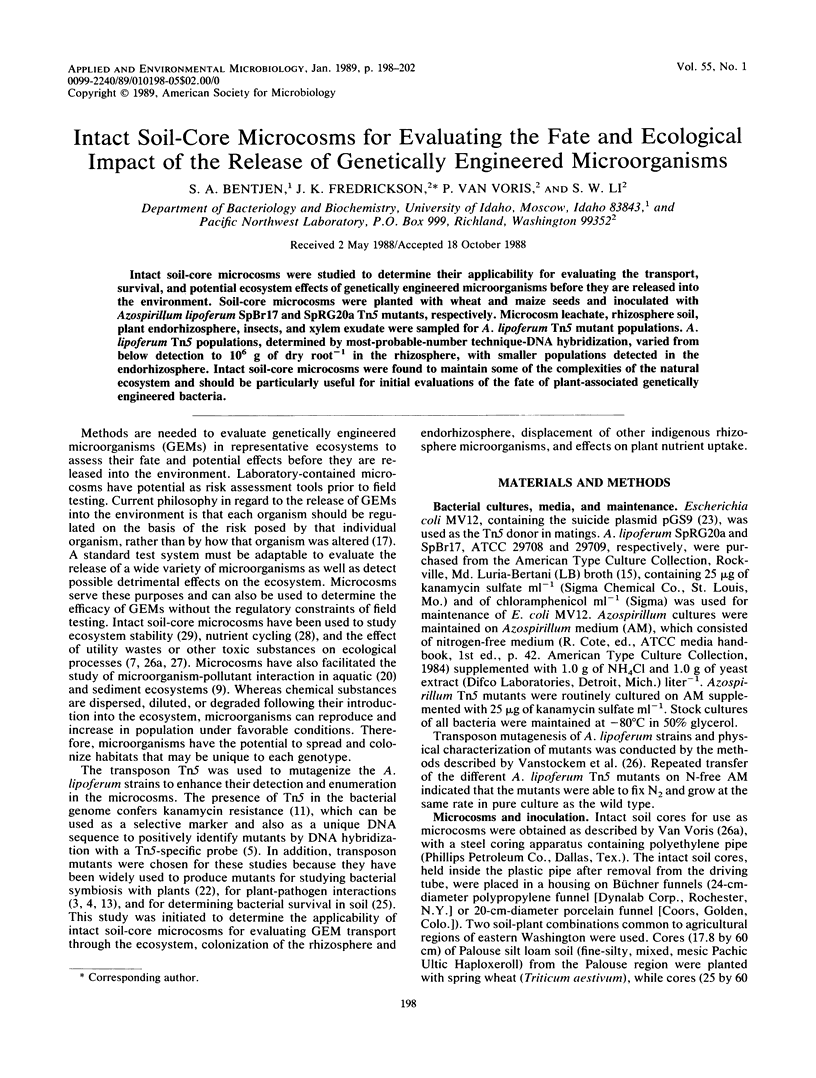
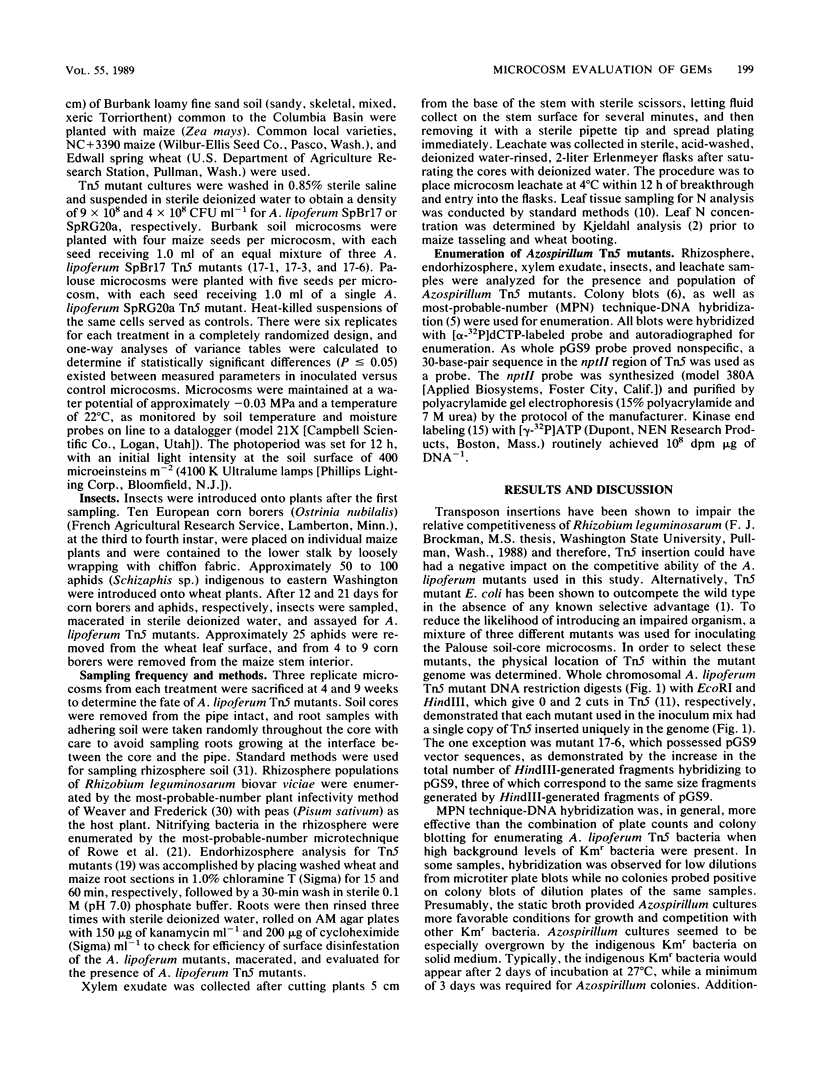
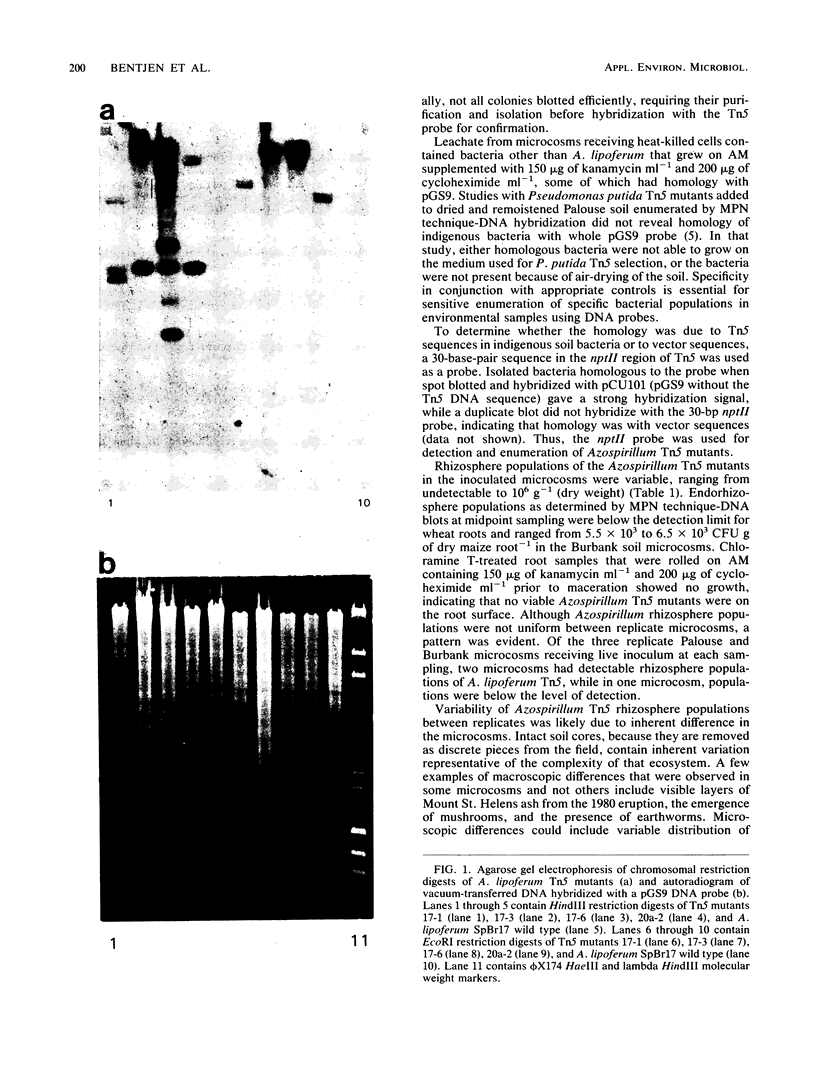
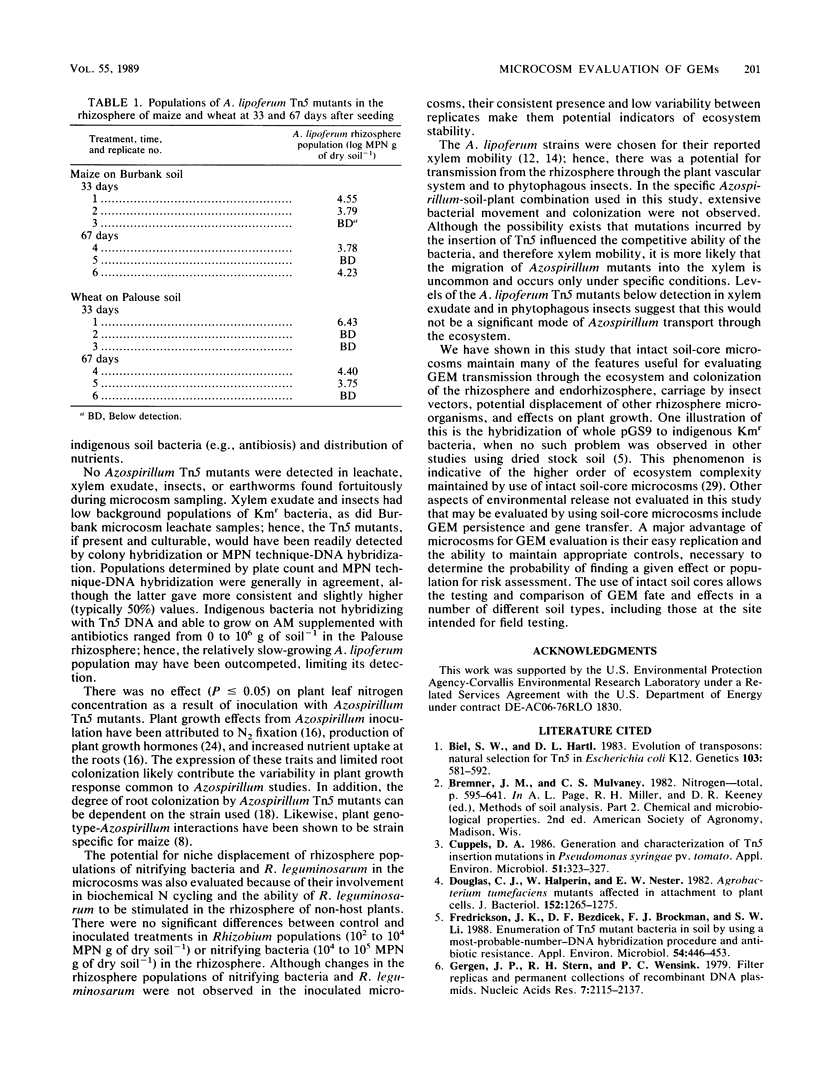
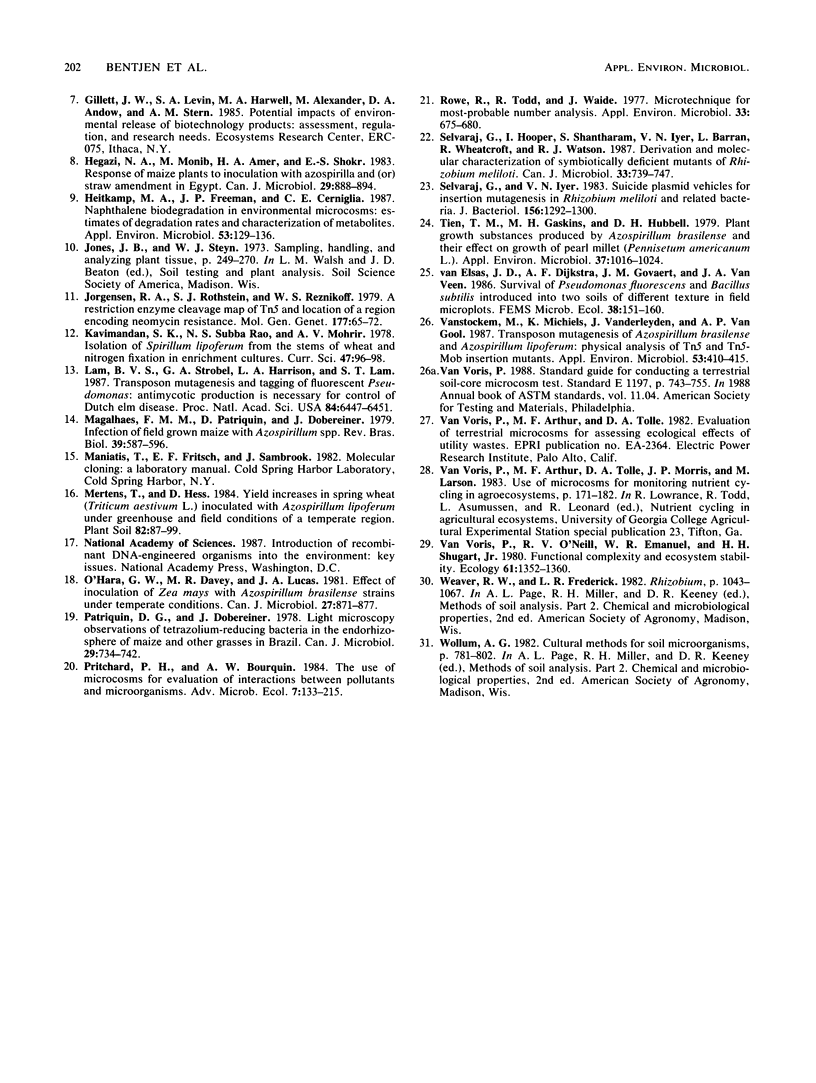
Images in this article
Selected References
These references are in PubMed. This may not be the complete list of references from this article.
- Biel S. W., Hartl D. L. Evolution of transposons: natural selection for Tn5 in Escherichia coli K12. Genetics. 1983 Apr;103(4):581–592. doi: 10.1093/genetics/103.4.581. [DOI] [PMC free article] [PubMed] [Google Scholar]
- Cuppels D. A. Generation and Characterization of Tn5 Insertion Mutations in Pseudomonas syringae pv. tomato. Appl Environ Microbiol. 1986 Feb;51(2):323–327. doi: 10.1128/aem.51.2.323-327.1986. [DOI] [PMC free article] [PubMed] [Google Scholar]
- Douglas C. J., Halperin W., Nester E. W. Agrobacterium tumefaciens mutants affected in attachment to plant cells. J Bacteriol. 1982 Dec;152(3):1265–1275. doi: 10.1128/jb.152.3.1265-1275.1982. [DOI] [PMC free article] [PubMed] [Google Scholar]
- Fredrickson J. K., Bezdicek D. F., Brockman F. J., Li S. W. Enumeration of Tn5 mutant bacteria in soil by using a most- probable-number-DNA hybridization procedure and antibiotic resistance. Appl Environ Microbiol. 1988 Feb;54(2):446–453. doi: 10.1128/aem.54.2.446-453.1988. [DOI] [PMC free article] [PubMed] [Google Scholar]
- Gergen J. P., Stern R. H., Wensink P. C. Filter replicas and permanent collections of recombinant DNA plasmids. Nucleic Acids Res. 1979 Dec 20;7(8):2115–2136. doi: 10.1093/nar/7.8.2115. [DOI] [PMC free article] [PubMed] [Google Scholar]
- Heitkamp M. A., Freeman J. P., Cerniglia C. E. Naphthalene biodegradation in environmental microcosms: estimates of degradation rates and characterization of metabolites. Appl Environ Microbiol. 1987 Jan;53(1):129–136. doi: 10.1128/aem.53.1.129-136.1987. [DOI] [PMC free article] [PubMed] [Google Scholar]
- Jorgensen R. A., Rothstein S. J., Reznikoff W. S. A restriction enzyme cleavage map of Tn5 and location of a region encoding neomycin resistance. Mol Gen Genet. 1979;177(1):65–72. doi: 10.1007/BF00267254. [DOI] [PubMed] [Google Scholar]
- Lam B. S., Strobel G. A., Harrison L. A., Lam S. T. Transposon mutagenesis and tagging of fluorescent Pseudomonas: Antimycotic production is necessary for control of Dutch elm disease. Proc Natl Acad Sci U S A. 1987 Sep;84(18):6447–6451. doi: 10.1073/pnas.84.18.6447. [DOI] [PMC free article] [PubMed] [Google Scholar]
- O'Hara G. W., Davey M. R., Lucas J. A. Effect of inoculation of Zea mays with Azospirillum brasilense strains under temperate conditions. Can J Microbiol. 1981 Sep;27(9):871–877. doi: 10.1139/m81-138. [DOI] [PubMed] [Google Scholar]
- Patriquin D. G., Döbereiner J. Light microscopy observations of tetrazolium-reducing bacteria in the endorhizosphere of maize and other grasses in Brazil. Can J Microbiol. 1978 Jun;24(6):734–742. doi: 10.1139/m78-122. [DOI] [PubMed] [Google Scholar]
- Rowe R., Todd R., Waide J. Microtechnique for most-probable-number analysis. Appl Environ Microbiol. 1977 Mar;33(3):675–680. doi: 10.1128/aem.33.3.675-680.1977. [DOI] [PMC free article] [PubMed] [Google Scholar]
- Selvaraj G., Iyer V. N. Suicide plasmid vehicles for insertion mutagenesis in Rhizobium meliloti and related bacteria. J Bacteriol. 1983 Dec;156(3):1292–1300. doi: 10.1128/jb.156.3.1292-1300.1983. [DOI] [PMC free article] [PubMed] [Google Scholar]
- Tien T. M., Gaskins M. H., Hubbell D. H. Plant Growth Substances Produced by Azospirillum brasilense and Their Effect on the Growth of Pearl Millet (Pennisetum americanum L.). Appl Environ Microbiol. 1979 May;37(5):1016–1024. doi: 10.1128/aem.37.5.1016-1024.1979. [DOI] [PMC free article] [PubMed] [Google Scholar]
- Vanstockem M., Michiels K., Vanderleyden J., Van Gool A. P. Transposon Mutagenesis of Azospirillum brasilense and Azospirillum lipoferum: Physical Analysis of Tn5 and Tn5-Mob Insertion Mutants. Appl Environ Microbiol. 1987 Feb;53(2):410–415. doi: 10.1128/aem.53.2.410-415.1987. [DOI] [PMC free article] [PubMed] [Google Scholar]



